Three masses 1kg,6kg and 3kg are of connected to each other with thread and are placed on a table as shown in figure. If g - 10 , the acceleration with which the system is moving is ............. .
 Solution in Gujrati
Solution in Gujrati
0
1
2
3
The correct Answer is:C
Acceleration produced in the system
Topper's Solved these Questions
- BOOK - KUMAR PRAKASHANCHAPTER - LAW OF MOTIONEXERCISE - (QUESTION PAPER) SECTION-A5videos
LAW OF MOTION
- BOOK - KUMAR PRAKASHANCHAPTER - LAW OF MOTIONEXERCISE - (QUESTION PAPER) SECTION-B2videos
LAW OF MOTION
- BOOK - KUMAR PRAKASHANCHAPTER - LAW OF MOTIONEXERCISE - SECTION -E(MULTIPLE CHOICE QUESTIONS) (MCQS)69videos
LAW OF MOTION
- BOOK - KUMAR PRAKASHANCHAPTER - GRAVITATIONEXERCISE - QUESTIONS PAPER Section - D1videos
GRAVITATION
- BOOK - KUMAR PRAKASHANCHAPTER - MACHANICAL PROPERTIES OF SOLIDS EXERCISE - QUESTION PAPER11videos
MACHANICAL PROPERTIES OF SOLIDS
Similar Questions
What is dynamics?
08:20View SolutionWhat are concurrent forces ?
09:02View SolutionThe position (x) → time (t) graph of one dimensional motion of a body of mass 0.4 kg. What is the magnitude of impulse of force
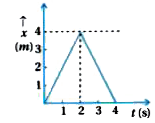 02:53View Solution
02:53View SolutionA spaceship is stationed on Mars. How much energy must be expended on the spaceship to launch it out of the solar system ? Mass of the spaceship = 1000 kg, mass of the sun =2×1030kg, mass of mars =6.4×1023kg, radius of mars = 3395 km, radius of the orbit of mars =2.28×108km,G=6.67×10−11Nm2kg2
02:39View SolutionWhat is called brittle material ?
02:05View SolutionIn the adjacent figure, masses of A,B and C are 1kg,3kg and 2kg respectively. Find
(a) the acceleration of the system and
(b) tension in the strings.
Neglect friction.(g=10m/s2)
 03:03View Solution
03:03View SolutionFor the system shown in figure, M=1kg m=0.2 kg, r=0.2m calculate (g=10m//s^(2)) (a). The linear acceleration of hoop, (b). The angular acceleration of the hoop of mass M and (c). The tension in the rope.
03:37View SolutionWhich would require a greater force - accelerating a 10 g mass at 5 m/ s^(2) or 20 g mass at 2 m/ s^(2) ?
02:15View SolutionThree masses of 1kg, 6 kg and 3 kg are connected to each other with theads and are placed on a table as shown in figure. What is the acceleration with which the system is moving? ( Take g=ms−2)
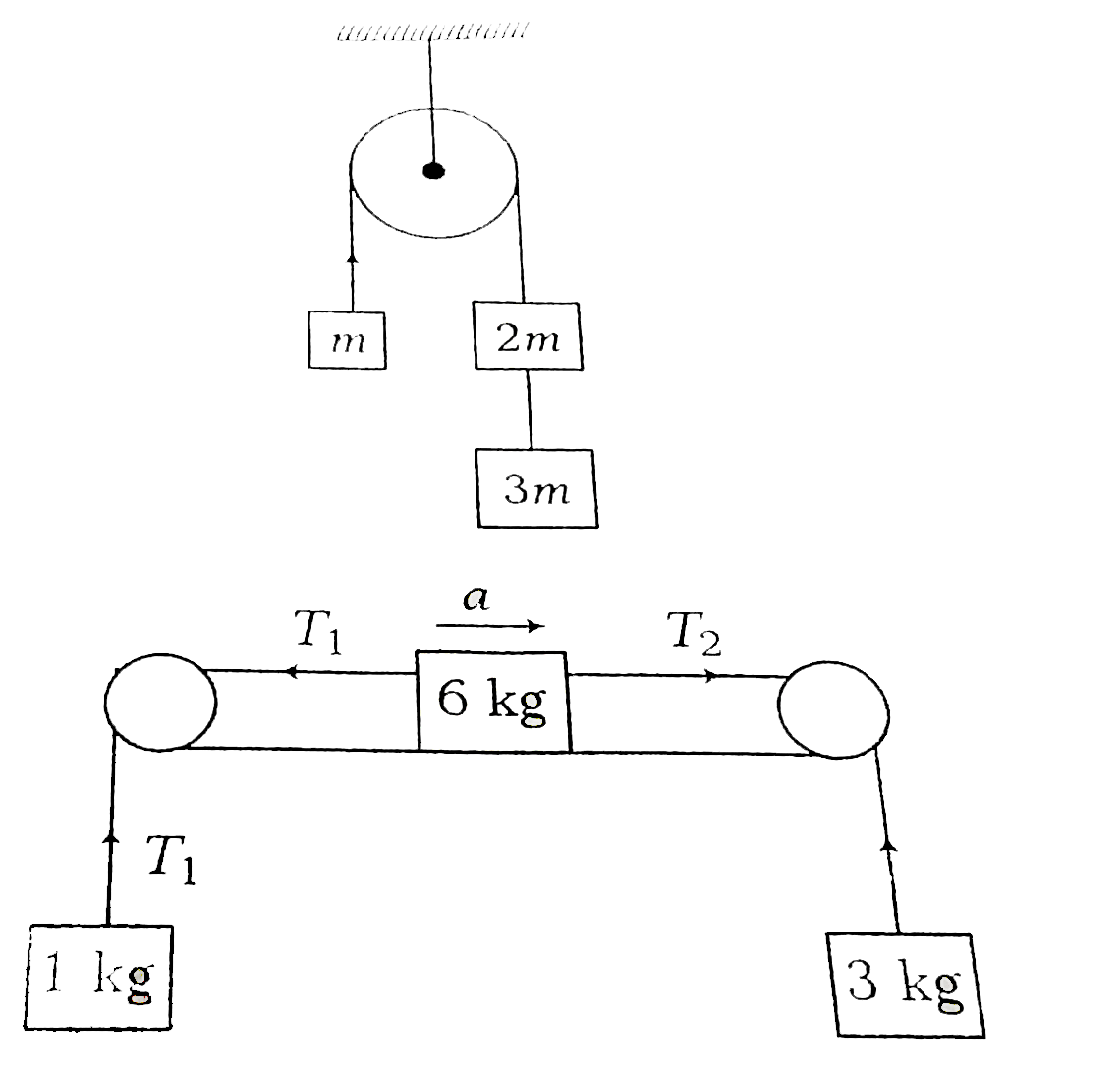 04:30View Solution
04:30View SolutionThree masses of 1 kg, 6 kg and 3 kg are connected to each other with threads and are placed on a table as shown in figure. What is the accelration with which the system is moving? Take g=10ms−2:
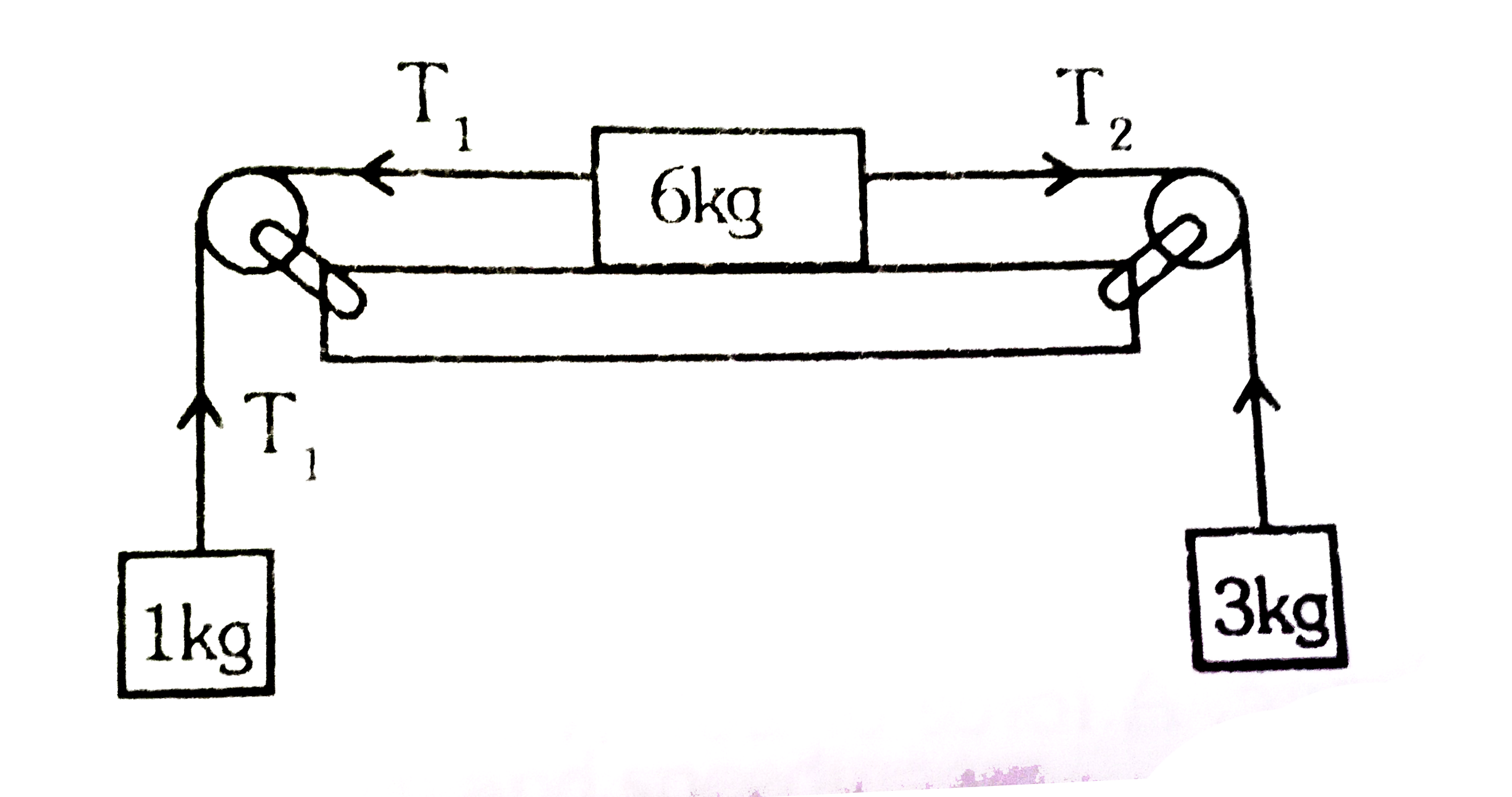 03:18View Solution
03:18View SolutionA man of mass 60kg is standing on a weighing machine placed in a lift moving with velocity 'v' and acceleration 'a' as shown in figure. Calculate the reading of weighing machine in following situation : ( g = 10 m//s^(2) ) a = - 2 m//s^(2) , v= - 2 m//s
03:35View SolutionIn the system shown in the adjoining figure, the acceleration of the 1 kg mass is m/s2. (take g=10m/s2)
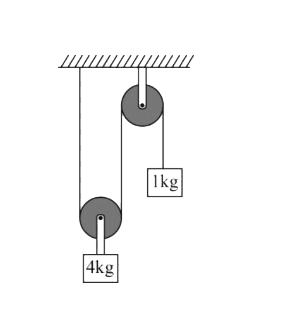 01:43View Solution
01:43View SolutionA block A of mass 3kg and another block B of mass 2 kg are connected by a light inextensible string as shown in figure. If the coefficient of friction between the surface of the table and A is 0.5. What maximum mass C is to be placed on A so that the system is to be in equilibrium? (g=10m/s2)
 03:15View Solution
03:15View SolutionA block A of mass 7Kg is placed on a frictionless table. A thread tied to it passes over frictionless pulley and carries a body B of mass 3 Kg at the other end. The acceleration of the system is ......... (m/s)(Given g=10ms−2 )
 03:08View Solution
03:08View Solutionतीन द्रव्यमान 1 kg, 6 kg तथा 3 kg एक दूसरे से चित्रानुसार द्रव्यमान रहित धागों से जुड़े हैं तो निकाय के त्वरण का मान है (g=10m/s2) : -
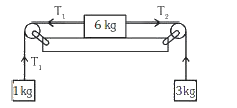 07:28View Solution
07:28View Solution

